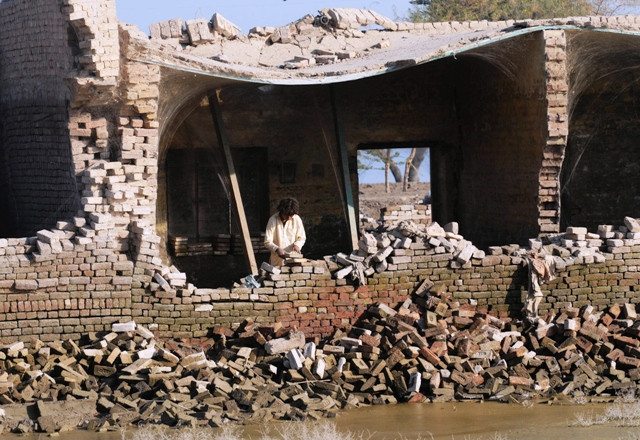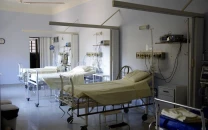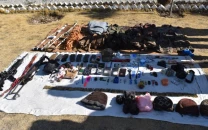Disaster management: Some people never learn
Desperate for shelter, flood survivors build their homes with low quality materials.

With night-time temperatures falling to five degrees Celsius or less he is glad to have shelter, but he concedes his house has been hastily built and may not survive another disaster. “This house is built with lower quality materials compared to the one washed away by the [July-August 2010] flood. I did not have much money, but desperately needed shelter for my family,” he said.
This means Mowaz’s house, like many others built by flood victims, is vulnerable to any future disaster - including the next round of monsoon rains, expected in July and August this year.
Ahmad Kamal, a spokesman for the National Disaster Management Authority, told IRIN that disaster preparedness is “very important”. He said that after the 2005 earthquake in Azad Kashmir and northern parts of the country, houses built by the Earthquake Relief and Rehabilitation Authority were “based on a policy of `build back better’ so they could better withstand disaster.”
He said the government’s Planning Commission was responsible for post-flood reconstruction. “The reconstruction phase has not begun yet but it is expected that the same policy of building back better will be followed when it gets under way,” he said.
Kamal said people who had built homes themselves to meet shelter needs had “probably not built according to any format” but used the same methods and materials they had employed in the past.
This seems to be the case across the flood-zone where most victims in K-P and Punjab built or repaired houses, or are in the process of doing so. Rebuilding activity is also under way in many areas of Sindh - the province worst hit by floods. “We need to rebuild so we can get on with our lives,” said Malook Muhammad, from Thatta District. He said he “did not understand” what a disaster-resistant shelter was.
Some efforts have been made to put up shelters that can better withstand floods or other natural disasters.
Mehreen Saeed, communications analyst at the UN Development Programme (UNDP) explained, “After the 2005 earthquake, people from many organisations came to talk about building safer homes, from light-weight materials, to people in disaster-hit areas. But basically, people just built as they had always done.”
“We have many disasters such as landslides, flash floods, heavy rains, and quakes. Safer housing could save lives,” opined Aneesullah, 40, an engineer.
He said that after a disaster the need for shelter is paramount in people’s minds. They do not wait for authorities to help them build safer houses.
Saleem Jan for Swat disagreed, “It is all in the hands of God. He gives and takes life. Safer housing cannot determine who lives or dies. Besides, we had to build quickly or face the risk of freezing. There was no time after the flood to wait for plans from the government.”
Published in The Express Tribune, January 14th, 2011.



















COMMENTS
Comments are moderated and generally will be posted if they are on-topic and not abusive.
For more information, please see our Comments FAQ